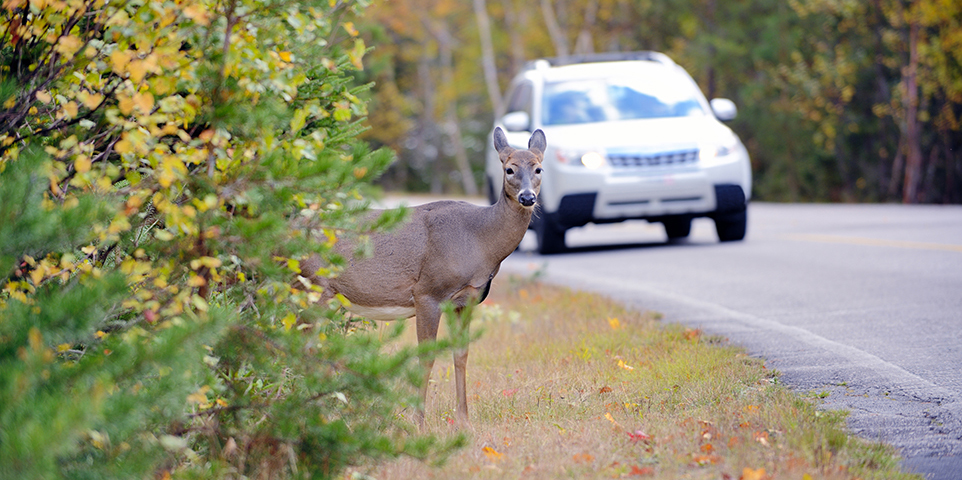As the deer populations grow and urban habitats continue to encroach upon rural environments, there has been an increase in deer-car collisions. Deer-vehicle collisions are dangerous and costly so, though collision with an animal is covered under the comprehensive portion of your auto insurance policy, it's always preferable to avoid an accident in the first place.
To avoid hitting a deer, use these defensive driving tips
- Be especially attentive during peak deer hours. From sunset to midnight and during the hours shortly before and after sunrise are the highest risk times for deer-vehicle collisions
- Use extra caution when driving through deer-crossing zones. Also be especially careful in places known to have a large deer population and in areas where roads divide agricultural fields from forestland.
- Know that deer seldom run alone. If you see one deer, others may be nearby.
- Use high beam headlights if driving at night, when there is no oncoming traffic. The higher light will better illuminate the eyes of deer on or near the roadway.
- Slow down and blow your horn with one long blast to frighten the deer away.
- Brake firmly but stay in your lane when you notice a deer in or near your path. Many serious crashes occur when drivers swerve to avoid a deer and hit another vehicle or lose control of their cars.
- Always wear your seat belt. Most people injured in car-deer crashes were not wearing their seat belt.
- Do not rely on deer-deterring devices. Deer whistles, deer fences and reflectors have not been proven to reduce deer-vehicle collisions.
- If your vehicle strikes a deer, do not touch the animal. A frightened and wounded deer can hurt you or further injure itself. The best procedure is to get your car off the road, if possible, and call the police.
- In the event a deer damages your car contact your insurance agent or company representative to report the incident.
Next steps: Had an accident? Here's what to do at the scene.
